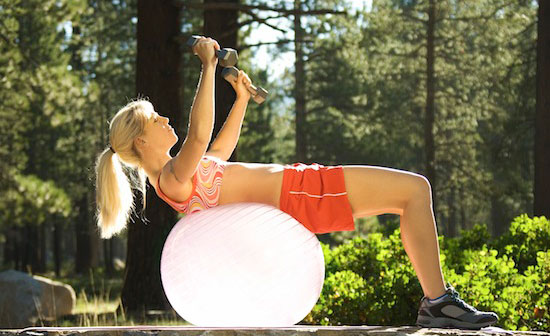Being balanced isn’t really something you are; it is something you do. If life is a stage, the balancing of it is a never-ending act. Need convincing? Take a look at your own daily tightrope. Life’s challenges come in all shapes and sizes. The demands of work, family, and relationships are ongoing. Often, the scales get tipped, leaving you feeling stressed, unfulfilled, and exhausted.
Most of the time, you recognize a heavy-weight on the other end of the see-saw. It’s hard work to bring yourself back down to where both feet are planted firmly on the ground.
It would be nice to feel that connection more often to deflect the stress from life’s overloads, walking your tightrope with more energy and confidence. Connection is balance. It means taking control of your life and building your “to do” list into a healthy, well-rounded action plan. You can have it all; not necessarily at once, but in a balanced flow that tips the scales in your favor.
But first you need to make some self-prioritizing choices. This booklet can help you do just that. All you need to do is make a commitment to take care of your physical and emotional self. By finding your fitness balance, you can develop the energy and confidence to better handle life’s challenges. The payoff will be well worth the effort.
Your Personal Balancing Act
What does a balanced lifestyle mean to you? Write down all of the things that you do during a one-week span. Break them down into the areas outlined below.
Family
Work
Social
Physical
Spiritual
Recreational
Now, take a look at your weekly balancing act. Do you see the priorities in your life? Do any categories need adjusting? Remember, balance is a work in progress.
The Fitness Balance – A Body/Mind Connection
“Excessive training does not equate with fitness. Rest figures into the equation as well. The real secret to health is balance.” -Sara Zimmer
You played the game, but your heart wasn’t in it. You went up the rock wall, but your fears pulled you down. You got indigestion because you were irritated. Or was it the other way around?
These are just a few examples of the way the body and mind work in conjunction or sometimes fail miserably at the task. Whether you’re going for the chip shot, making the lay-up, or arguing with your boss, there’s more than your arms, legs and mouth that are accountable. There’s the stuff between your ears that needs the same training, conditioning and healing as the body The body and mind must work as a unit for you to feel balanced and connected. Neither can be ignored.
By taking care of both, you will have the tools to handle your daily overload. Just as a world-class athlete listens to her body, she listens to her soul as well. She knows both must be in-sync to perform at her best. By taking care of your body, emotional and mental health will follow, allowing you to perform at your best.
A Beneficial Balance
Being fit sets off a chain reaction. Your self-esteem is reinforced, affecting your total lifestyle. You eat better, sleep better, love better. Fitness will give you the stamina to handle life with assurance, performing at your best when the pressure’s on.
What can you expect when you embark on a regular activity program? Your lungs will take in more oxygen. Your heart will work more efficiently. Your muscles will grow stronger and become more elastic. You’ll begin to burn fat and increase bone mass. Your creativity will be enhanced. You’ll make the best of life.
Benefits of Regular Activity
- Weight Control – The safest way to maintain ideal body weight and prevent obesity is to remain physically active.
- A Stronger Heart – Evidence shows that moderate exercise can cut the risk of heart disease in women by 40%. (Study done by Dr. JoAnn Manson, co-director of women’s health, Brigham and Women’s Hospital and Harvard Medical School, 1995).
- Good Cholesterol – Moderate activity can raise High Density Lipoproteins (HDLs), the good” type of cholesterol, while lowering Low Density Lipoproteins (LDLs), the harmful cholesterol.
- Builds Strong Bones – Moderate activity can help protect your bones from the slow decay of osteoporosis, which causes bones to become weak and brittle. By working with weights twice a week, postmenopausal women can resist osteoporosis.
- Good Aging – Evidence suggests that an active lifestyle and a healthy diet can prevent the most common disorders of aging. Only about 30% of the characteristics of aging are genetically determined. The other 70% are linked to lifestyle.
- Increased Muscle Mass – To lose the weight use the weight. Activities that build strength also build lean muscle mass. The more lean muscle mass you develop, the less body fat you carry around.
- Fights Cancer – A study at the University of California School of Medicine found that regular exercise during childbearing years significantly reduced breast cancer among study participants.
- Emotional Health – Physical exertion produces a steady stream of endorphins, natural chemicals in the brain that that make you feel good. Exercise releases pent-up tension, increasing relaxation and decreasing sleeplessness, headaches and stomach aches.

